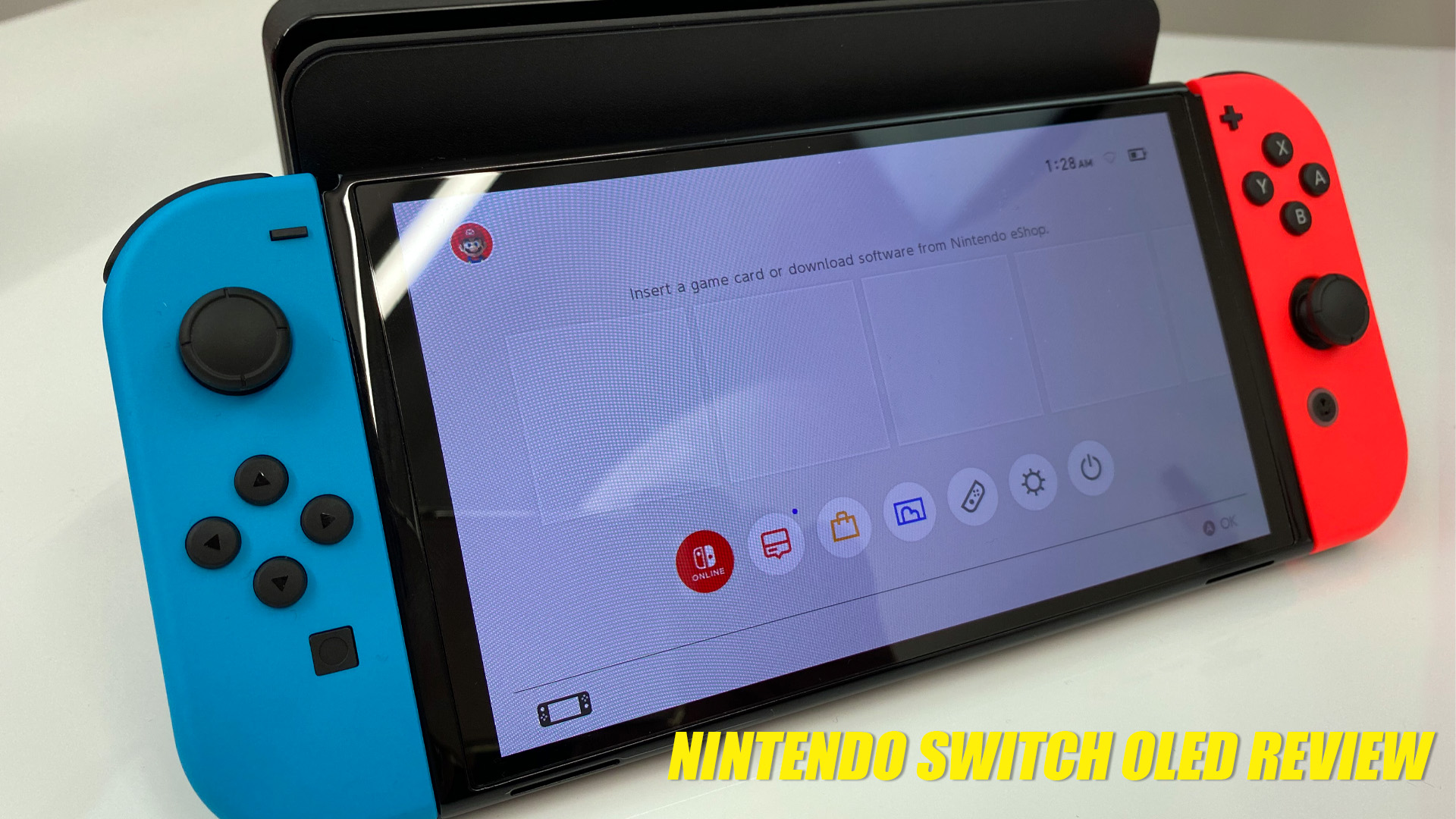The Infamous Nintendo Switch OLED Is Finally Here
Released on October 8th, which lined up with the release of Metroid Dread, the Nintendo Switch OLED was released in the United States. This was following months of buzz involving rumors of a new Switch. Part of it was due to the misconception that the new Switch model was the oft-requested "Switch Pro" model. A Nintendo Switch that would have better specifications than its base model, which is commonplace for consoles in general. The PS4 had it with the Pro model, Xbox One with X, 3DS with New 3DS, and so on.
Unfortunately, the hype for the Switch OLED far preceded any news that Nintendo brought up. Everything up until an official Nintendo announcement was sheer speculation and rumors. When Nintendo officially announced the Switch OLED, many were disappointed that it wasn't the model that Nintendo never confirmed. Regardless, the Nintendo Switch OLED has arrived at our doorstep and it's time to get to the bottom of this. Is the OLED worth it compared to the OG Nintendo Switch?

Presentation Is Everything For The Nintendo Switch OLED
The one thing I can say that's an immediate positive is the packaging of the Switch OLED. Compared to the OG Switch, it's more compact and square than its long rectangular counterpart. The amount of goodies included in the Switch OLED is similar, if not entirely identical to the original Switch. This isn't the only instance where the Switch OLED takes advantage of its real estate as the star of the show is the console itself.
The Switch OLED and the OG Switch, believe it or not, are the exact same size when compared side to side. The Switch OLED has a tad more weight to it than its original counterpart. The OLED screen expands across the black edges of the original Switch, taking advantage of the Switch's real estate once more. This bumps the screen about .8 of an inch to 7 inches up from 6.2 inches. Aside from a larger screen, the OLED screen trumps the previous LCD screen with its presentation.

The OLED Offers Graphics A Fresh Coat Of Paint
In order to test the capabilities of the Switch OLED's screen, I decided to play Streets of Rage 4 as the console's first drive out of the dealership. The main reason was because of the graphics of the game itself. The hand-drawn art style, color environments, and impressive animations seemed like a perfect blend to show off the OLED's potential. Thankfully, my hunch proved to be correct. One of the major positives of the OLED screen is how it processes color.
The colors on the Nintendo Switch OLED's screen are vivid and expressive, featuring some of the richest volumes I've seen. While the LCD screen on the Switch was great, compared to the OLED screen the colors are washed and muted. The OLED screen lacks any form of ghosting at all, making it an incredible choice for mobile gaming.

The Switch OLED Expands Your Horizons (And Viewing Distance)
Another positive feature the OLED model has over the OG Switch is the attached stand. On the original Nintendo Switch, there's a small kickstand that holds the Switch to a fixed angle. On the Switch OLED, the small kickstand is replaced with a stand that expands across the entire model.
Not only does this make the Switch rest at a solid angle, but it is also adjustable. At one point I was able to adjust the stand as far back as possible, making the Switch OLED appear like a tablet. The best thing about this set-up is that it makes playing with the joycons detached a cinch. When I recorded gameplay footage of Streets of Rage 4 I was able to show off the OLED screen via tabletop mode without issue.

The 'WiFi Warriors' Have No More Excuses With The Nintendo Switch OLED
As with the original Switch, an expandable memory slot can add a Micro SD card. The OLED model also has double the memory of the OG Switch, increasing from 32 GB to 64 GB. The dock is similar to the original Switch dock albeit with a smaller logo and rounded corners. Like the original, the OLED dock has two USB drives in the front but the back is radically different.
One of the major selling points of the OLED Switch is the inclusion of an ethernet port. One of the major complaints that the original Switch had was the lack of a wired connection by default. In order to use a wired connection, players needed a USB to Ethernet adapter that most players conveniently placed in the rear USB port. Nintendo replaced said USB port with an Ethernet port, further promoting the fact that most players used it for that very purpose. Unfortunately, these are where the positives end as the rest aren't necessarily negatives. They are just more of the same.

Hype Kills, Especially When Nintendo's Been Transparent
Of the items bundled with the Switch OLED, the only items we used from its packaging were the Switch OLED console, the OLED dock, and the joycons. The joycon grips, handheld grip, HDMI, and AC Adapters are all identical to the base model Switch. So much so in fact, that we were able to repurpose the items from our older Switch model without any issues.
Aside from double the memory space, the OLED screen, and the inclusion of an ethernet port, the specifications are the exact same. Even the process of transferring data from our OG Switch to the new Switch OLED was similar. This was probably what upset most fans who expected a brand new model. Even though Nintendo stated many times that this wasn't the case.
The Nintendo Switch OLED Is The Best Switch Available
For this reason, unless players use their Switch outside of TV mode occasionally, Switch owners should keep their wallets at bay. There isn't any difference in playing on TV mode as opposed to the OG Switch. The OLED model shines brightest when in handheld mode not only for convenience but for the higher quality screen. Fans concerned with memory can simply purchase more with a Micro SD card for cheap.
Those who wish to experience a wired connection can purchase a fairly cheap USB adapter for less than $20. While Nintendo hadn't ruled out the possibility of an advanced Switch model, it's clear that the Switch OLED isn't meant to replace the OG Switch. It's simply a premium upgrade geared towards those who have yet to own a Switch or those who are Switch purists.

The Nintendo Switch OLED Model is currently available at all major retailers.

